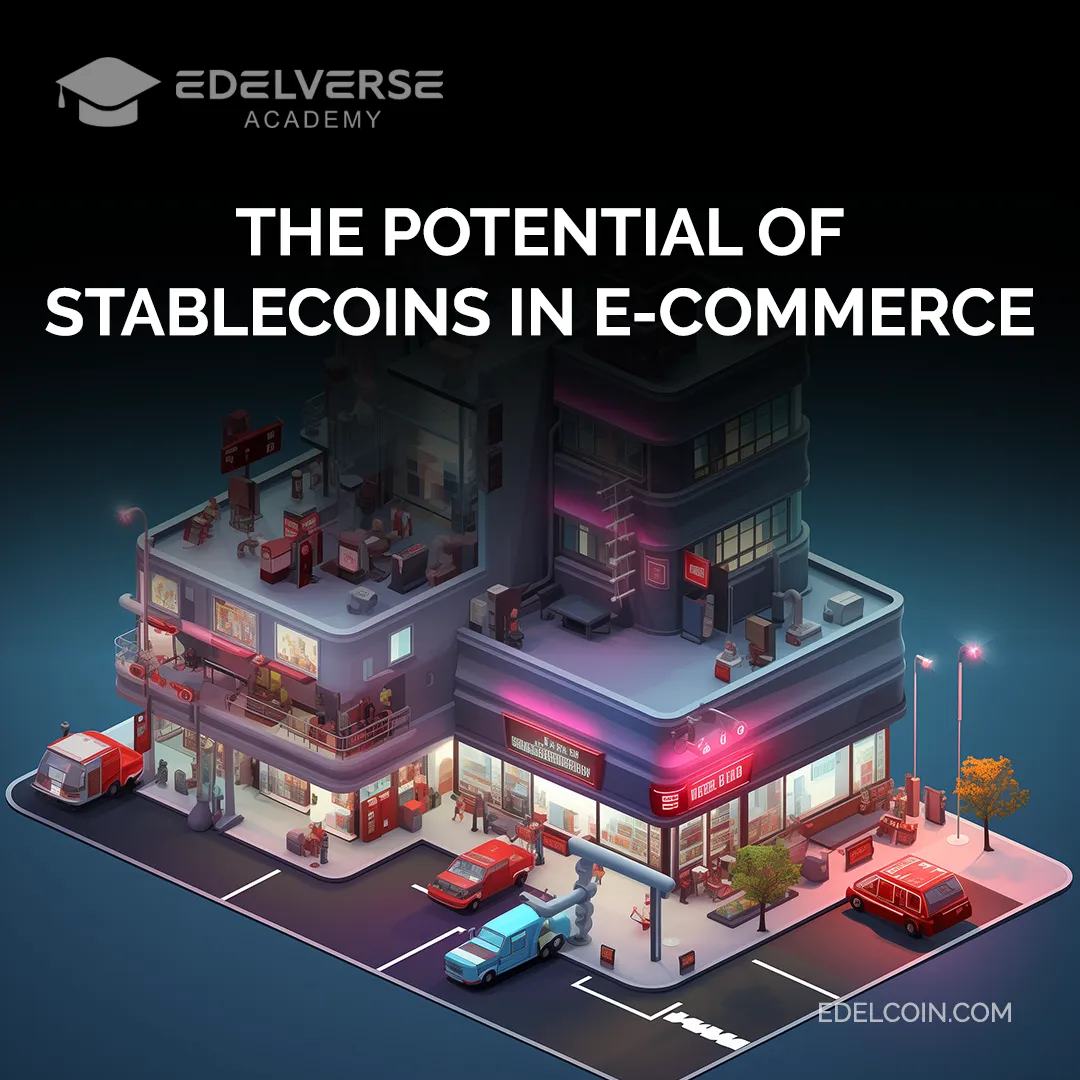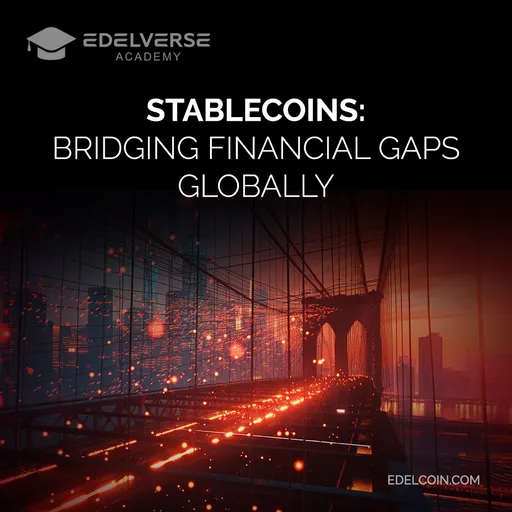
The Potential of Stablecoins in E-Commerce
Introduction
As e-commerce continues to grow and evolve, the need for efficient, secure, and cost-effective payment solutions has become increasingly important. Traditional payment methods, such as credit cards and bank transfers, often come with high fees, lengthy processing times, and security risks. Enter stablecoins—digital currencies designed to maintain a stable value relative to a specific asset, typically a fiat currency or other assets. Among these stablecoins, Edelcoin stands out as an innovative solution backed by a diversified portfolio of precious and base metals. Now launched on the Polygon blockchain, Edelcoin is poised to revolutionize e-commerce by offering faster, cheaper, and more secure transactions. This article explores the potential of stablecoins in e-commerce and how Edelcoin could change the way we shop online.
What Are Stablecoins?
Defining Stablecoins
Stablecoins are a type of cryptocurrency that is pegged to a stable asset, such as a fiat currency, a commodity like gold, or a basket of assets. Unlike traditional cryptocurrencies like Bitcoin and Ethereum, which are known for their price volatility, stablecoins are designed to maintain a consistent value. This stability makes them an ideal medium of exchange for everyday transactions, including online shopping.
Edelcoin is a prime example of an asset-backed stablecoin. It is uniquely backed by a diversified portfolio of industrial and rare metals. This diversified backing not only ensures stability but also offers intrinsic value, making Edelcoin a robust and reliable option for digital payments, especially in the e-commerce space.
Types of Stablecoins
Stablecoins can be categorized into these main types:
- Fiat-Collateralized Stablecoins: Backed by reserves of fiat currencies held by a central entity. Examples include Tether (USDT) and USD Coin (USDC).
- Crypto-Collateralized Stablecoins: Backed by other cryptocurrencies. These stablecoins are often over-collateralized to account for the volatility of the underlying assets. An example is Dai (DAI).
- Asset-Backed Stablecoins: Edelcoin falls into this category, as it is backed by physical assets like precious and base metals. This provides additional security and reduces volatility compared to other stablecoins.
Edelcoin's Launch on Polygon: A Game-Changer for E-Commerce
The Polygon Advantage
Edelcoin's recent launch on the Polygon blockchain significantly enhances its potential in the e-commerce space. Polygon is a Layer 2 scaling solution for Ethereum that provides faster transaction speeds and lower costs compared to Ethereum's mainnet. By leveraging Polygon's technology, Edelcoin transactions are processed more efficiently and at a fraction of the cost, making it an ideal payment solution for e-commerce.
Simplifying and Reducing Transaction Costs
One of the major challenges in e-commerce is the high transaction fees associated with traditional payment methods, such as credit cards. These fees can range from 2% to 3% per transaction, which can significantly impact the profit margins of small businesses. By using Edelcoin on the Polygon blockchain, transaction fees are drastically reduced, allowing merchants to keep more of their earnings. This is particularly beneficial for cross-border transactions, where traditional fees and currency conversion costs can be prohibitive.
For example, a typical credit card transaction might take several days to settle and cost up to 7% in fees. In contrast, an Edelcoin transaction on Polygon is settled within minutes and costs a fraction of a cent. This efficiency not only saves money but also speeds up the payment process, enabling merchants to access their funds more quickly and reinvest in their businesses.
Increased Accessibility and Global Reach
The integration of Edelcoin on Polygon also enhances its accessibility for global e-commerce. Polygon's low transaction costs and high throughput make it easier for consumers and merchants worldwide to adopt Edelcoin as a payment method. This is especially important in regions with limited access to traditional banking services, where high fees and slow transaction times can be barriers to participation in the global economy. With Edelcoin, users can engage in cross-border transactions seamlessly, opening up new markets and opportunities for e-commerce businesses.
The Benefits of Stablecoins in E-Commerce
Reduced Transaction Fees
One of the most significant advantages of using stablecoins like Edelcoin in e-commerce is the reduction in transaction fees. Traditional payment methods, such as credit cards, can charge merchants fees ranging from 3% to 7% per transaction. These fees can add up quickly, especially for small businesses operating with thin margins. With Edelcoin, particularly on the Polygon blockchain, transaction fees are dramatically lower, allowing merchants to retain more of their revenue. This cost-efficiency can be particularly beneficial for e-commerce platforms looking to reduce overhead costs.
Faster Transaction Settlements
Stablecoins offer near-instantaneous transaction settlements, eliminating the need for the lengthy processing times associated with traditional payment methods. Credit card payments and bank transfers can take days to settle, particularly for international transactions. With Edelcoin on Polygon, payments are settled on the blockchain within minutes, allowing merchants to access their funds more quickly. This speed is especially valuable in the fast-paced world of e-commerce, where quick turnarounds can be a competitive advantage.
Enhanced Security and Privacy
Edelcoin provides enhanced security for both merchants and consumers. Traditional payment systems often require the sharing of sensitive information, such as credit card numbers and personal details, which can be vulnerable to fraud and data breaches. Edelcoin transactions are secured by blockchain technology, which offers a higher level of security and privacy. Consumers can make purchases without sharing personal financial information, reducing the risk of identity theft and fraud.
Global Reach and Inclusion
Stablecoins like Edelcoin have the potential to expand the global reach of e-commerce by enabling cross-border transactions with ease. Traditional payment systems often involve high fees and currency conversion costs for international transactions. Edelcoin, now powered by Polygon, allows for seamless cross-border payments without the need for currency conversion. This capability can open up new markets for e-commerce businesses and make online shopping more accessible to consumers in regions with limited access to traditional banking services.
Price Stability
The price stability offered by Edelcoin makes it an attractive option for both merchants and consumers. Unlike other cryptocurrencies that can experience significant price fluctuations within a short period, Edelcoin maintains a consistent value due to its backing by industrial and rare metals. This stability ensures that the value of a transaction remains the same from the time it is initiated to the time it is completed, providing predictability and confidence for both parties involved.
Real-World Applications of Stablecoins in E-Commerce
Shopify and Cryptocurrency Payments
Shopify, one of the largest e-commerce platforms globally, has integrated cryptocurrency payment options, including stablecoins, through partnerships with payment processors like BitPay and CoinPayments. This integration allows Shopify merchants to accept stablecoins as payment, providing their customers with more flexible and secure payment options. As stablecoins like Edelcoin continue to gain traction, their integration into such platforms can further enhance the shopping experience for both merchants and customers.
Cross-Border E-Commerce
Stablecoins like Edelcoin are also making cross-border e-commerce more accessible. Platforms that adopt Edelcoin for international transactions can offer their customers a seamless shopping experience without the high fees or delays typically associated with traditional payment methods. This innovation allows consumers to make purchases from foreign merchants without incurring high fees or dealing with currency conversion issues, making it easier for businesses to expand their customer base globally.
Decentralized Marketplaces
Decentralized marketplaces, such as OpenBazaar, are leveraging stablecoins to create a more secure and efficient online shopping experience. By using stablecoins like Edelcoin, these platforms can offer a decentralized alternative to traditional e-commerce, where buyers and sellers can transact directly with each other without the need for intermediaries. This not only reduces costs but also enhances privacy and security.
Challenges and Considerations
Regulatory Uncertainty
While stablecoins like Edelcoin offer numerous benefits for e-commerce, they are not without challenges. One of the primary concerns is regulatory uncertainty. As governments and financial regulators around the world grapple with how to regulate stablecoins, the future legal landscape remains unclear. E-commerce businesses considering the adoption of Edelcoin or other stablecoins must stay informed about regulatory developments and ensure compliance with local laws.
Trust and Adoption
For stablecoins like Edelcoin to be widely adopted in e-commerce, there needs to be a high level of trust among consumers and merchants. This requires transparency from stablecoin issuers, regular audits of reserves, and clear communication about how the stablecoin maintains its peg. Edelcoin's backing by tangible assets like precious and base metals provides an additional layer of trust, but building widespread adoption will still require ongoing education and transparency efforts.
Technological Integration
Integrating stablecoins like Edelcoin into existing e-commerce platforms can be technically challenging. Businesses need to ensure that their payment systems are compatible with blockchain technology and that they have the necessary infrastructure to manage stablecoin transactions securely. Additionally, educating customers on how to use Edelcoin for online purchases is essential for driving adoption.
The Future of Stablecoins in E-Commerce
The potential of stablecoins like Edelcoin in e-commerce is immense, offering solutions to many of the challenges faced by traditional payment systems. As technology continues to evolve and regulatory frameworks are established, Edelcoin could become a mainstream payment method in the e-commerce industry. Its ability to provide fast, secure, and cost-effective transactions, coupled with its global reach, positions Edelcoin as a key player in the future of digital commerce.
Conclusion
Stablecoins like Edelcoin have the potential to revolutionize e-commerce by offering a stable, efficient, and secure alternative to traditional payment methods. Their ability to reduce transaction fees, speed up settlement times, enhance security, and facilitate cross-border transactions makes them an attractive option for merchants and consumers alike. With the recent launch of Edelcoin on the Polygon blockchain, these benefits are further amplified, making it an even more compelling choice for digital payments. However, challenges such as regulatory uncertainty, trust, and technological integration must be addressed to fully realize their potential. As Edelcoin and other stablecoins continue to gain traction, they are poised to become significant forces in the future of e-commerce.

Test Your Knowledge
- What makes Edelcoin particularly suitable for e-commerce transactions?
a. Its high volatility
b. Its stability
c. Its reliance on traditional banking systems - How do stablecoins like Edelcoin reduce transaction costs in e-commerce?
a. By charging high fees similar to credit cards
b. By eliminating transaction fees entirely
c. By offering lower transaction fees - What is a key challenge for the adoption of stablecoins like Edelcoin in e-commerce?
a. High price volatility
b. Lack of internet access
c. Regulatory uncertainty
Correct answers: 1b, 2c, 3c.
Contents





